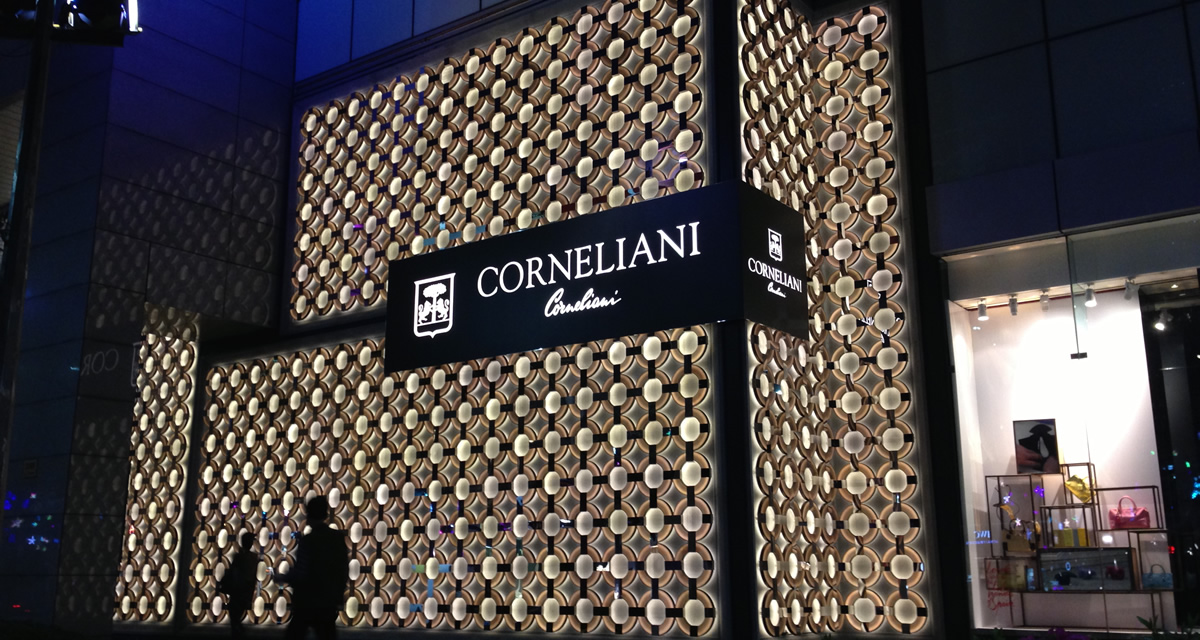The value of a brand
The new Corneliani boutique in Shanghai has been the perfect occasion to see once more the architectural and decorative elements that express the Mantua brand identity values, in line – though updated – with the flagship on via Monte Napoleone, in Milan.
A unique façade
The most striking feature is certainly the façade. For the first time, the Mantua brand is compelled to be represented in a univocal and ultimate manner on a very important external surface, the Citic Square, one of the most famous Chinese luxury malls, and in Shanghai, the economic and, in a way, cultural and social capital of the great Asian country.
The origins of a “brand”
We decided to go back to the origins, to Mantua- so rich and full of ideas, and where the bond with the Cornelianis is still very strong- to recover treasures of the Italian Renaissance, Mantegna’s painting and the Gonzaga Family’s Ducal Palace.








